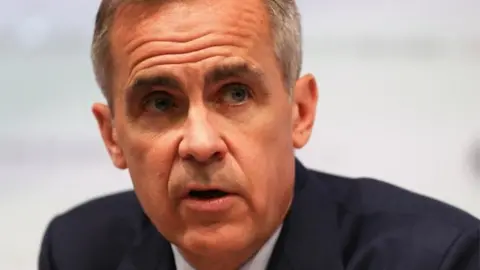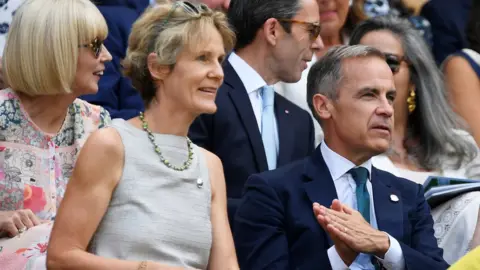Mark Carney to stay on at Bank of England until 2020
 Reuters
ReutersMark Carney will remain Bank of England governor until the end of January 2020, Chancellor Philip Hammond has told MPs.
Mr Hammond said the seven-month extension would "support a smooth exit" from the European Union.
The extension was agreed in an exchange of letters between the governor and the chancellor published on Wednesday.
Mr Carney said he was "willing to do whatever I can in order to promote both a successful Brexit and an effective transition at the Bank of England".
It is the second extension of his tenure as governor. When Mr Carney took over from Mervyn King in 2013, he agreed a five-year term with the option of a further three.
The typical term for the position has been eight years.
In October 2016, Mr Carney said he would staying on for an extra year, until June 2019, after his initial five-year term ended in 2018.
'Much-needed stability'
Mr Hammond told the Commons that the early part of summer 2019 "could be quite a turbulent period for our economy" following the UK's scheduled departure from the EU on 29 March.
Mr Carney had agreed "despite various personal pressures" to stay on until January 2020 to "help support continuity in our economy during this period", the chancellor said.
The extension will give the government more time to recruit his successor, amid concern that few candidates would want to take on the role during an unpredictable stage in the Brexit process.
Sir Jon Cunliffe, Bank of England deputy governor with responsibility for financial stability, has also been re-appointed for a second five-year term that will last until October 2023.
Bradley Fried, chair of the Bank's Court of Directors, welcomed their decisions to stay on: "Continuity in the outstanding leadership they provide will help the Bank succeed in our crucial work."
Nicky Morgan, chair of the Commons Treasury Committee, said the announcement provided "much-needed stability and clarity".
"The government should now use the extra seven months to continue its succession planning. It should identify a candidate in good time for the Treasury Committee to scrutinise the appointment," she added.
Shadow chancellor John McDonnell welcomed the move. "I have a good working relationship with Mark Carney. We meet on a regular basis and I have a lot of confidence in him, so I'm pleased this will give us a bit of stability."
 Reuters
ReutersThe Canadian was the first non-Briton to be appointed governor in the Bank's 300-year history and had previously run the Bank of Canada for five and a half years from February 2008.
In March 2008, just a month after his appointment, Mr Carney cut Canadian interest rates amid the financial crisis. That move, along with other measures, was considered to have boosted investor confidence, enabling Canada to recover more quickly than some other countries.
He had a commercial banking background, as well as experience in the public sector - unlike his two most recent predecessors who had spent their careers within the Bank of England and academia.
Mr Carney worked for investment banking giant Goldman Sachs in New York before returning home to work for Canada's Department of Finance.
Born in March 1965 in Fort Smith in Canada's Northwest Territories, he graduated from Harvard University in 1988 and then earned a doctorate in economics at Oxford University in 1995.
That year he married economist Diana Fox, whom he met at Oxford, and the couple now have four children.
